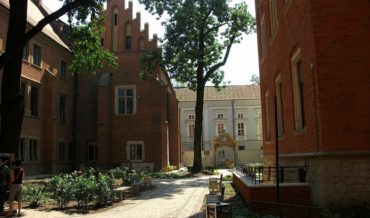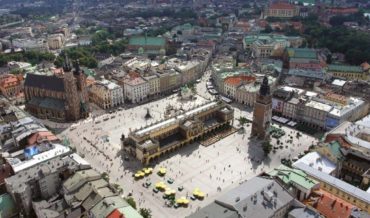Contents
Key Facts
- Johann Faust was one of the most renowned magicians and astrologers of medieval Europe
- 16th-century German sources claim he studied magic at the University of Krakow, though this remains historically unverified
- The Jagiellonian University was considered a premier center for astronomical and alchemical studies in medieval Europe
- Henryk Barycz, a distinguished Polish historian, disputed Faust's connection to Krakow in his scholarly work
- Faust became the inspiration for numerous literary and musical works including Goethe's famous "Faust"
- Johann Wolfgang von Goethe crafted his masterpiece "Faust" over nearly six decades primarily from his residence in Weimar, Germany
- The historical Faust likely lived in the late 15th and early 16th centuries
Historical Background and Early Life
Johann Georg Faust (c. 1480-1540) stands as one of the most enigmatic figures of the Renaissance period, bridging the worlds of historical reality and literary legend. While much of his early life remains shrouded in mystery, various sources suggest he was born in the German region of Württemberg, possibly in the town of Knittlingen or Helmstadt.
The historical Johann Faust was reportedly a scholar, alchemist, and practitioner of what was then considered natural magic. During the late medieval and early Renaissance periods, the boundaries between science, philosophy, and esoteric studies were far more fluid than in modern times, making figures like Faust both respected intellectuals and controversial practitioners of what would later be classified as occult sciences.
The Disputed Connection to Krakow University
One of the most persistent claims in Faust scholarship concerns his alleged studies at the Jagiellonian University in Krakow. Early German sources, including elements from the Faustbuch tradition of the late 16th century, suggest that Faust studied the esoteric sciences at this renowned institution. However, this connection remains a subject of considerable scholarly debate and skepticism.
The Academic Consensus
This connection to Krakow is firmly disputed by Henryk Barycz in his comprehensive historical analyses of Polish educational institutions. Barycz, a distinguished Polish historian specializing in the history of Polish education and culture, approached the Faust legend with rigorous academic scrutiny. His skepticism reflects the broader scholarly challenge of separating historical fact from the layers of myth that accumulated around Faust's persona over centuries.
Modern historians continue to find no concrete evidence supporting Faust's enrollment at Krakow. While the absence of documentation is not uncommon for the medieval period, as many university records were lost or destroyed over time, the lack of any credible historical evidence has led most serious scholars to classify this connection as legendary rather than factual.
Krakow's Genuine Reputation as a Center of Learning
During the medieval and early Renaissance periods, European universities, including Krakow, offered disciplines that encompassed what we now categorize separately as science, philosophy, and esotericism. The university, situated in what is now known as the university quarter, gained a reputation for its advanced studies in astronomy, alchemy, and natural philosophy—fields which, during this period, often incorporated elements now considered esoteric or magical.
The Medieval Curriculum
The university's curriculum attracted scholars from across Europe interested in:
- Astronomy and Astrology: Often taught together, combining mathematical observations with philosophical interpretations
- Alchemy: The precursor to modern chemistry, focusing on understanding matter transformation
- Natural Philosophy: Early scientific inquiry into the workings of the natural world
- Mathematics: Including geometry and theoretical calculations, some with mystical applications
The Collegium Maius, with its famous astronomical clock and extensive library, symbolized Krakow's genuine academic prestige. The institution's commitment to astronomical studies attracted scholars who often found inspiration in the surrounding academic environment. Notable scholars like Nicolaus Copernicus studied here, reinforcing the university's reputation for astronomical studies that often bordered on what contemporaries considered magical arts. The university's approach to natural philosophy studies was particularly advanced for its time.
Literary and Cultural Evolution
The transformation of the historical Faust into a literary archetype began shortly after his death and has continued for nearly five centuries. Faust became the hero of numerous literary and musical works, establishing one of the most enduring legends in Western culture, influencing Polish literary figures such as Cyprian Kamil Norwid and becoming part of the broader European literary tradition that would later be celebrated alongside figures like Adam Mickiewicz.
Early Literary Adaptations
The first major literary treatment appeared in the "Historia von D. Johann Fausten" (1587), a German chapbook that established many key elements of the Faust story. This work was adapted by Christopher Marlowe into his influential play "The Tragical History of Doctor Faustus" (c. 1592), which emphasized the moral consequences of forbidden knowledge.
Thomas Mann's "Doktor Faustus" (1947) represents one of the most sophisticated modern treatments, using the legend as an allegory for German intellectual culture and its moral compromises.
Musical Interpretations
The Faust legend has inspired numerous musical compositions, including:
- Charles Gounod's opera "Faust" (1859), among the most popular operas of the 19th century
- Hector Berlioz's "La Damnation de Faust" (1846), a dramatic cantata
- Franz Liszt's "Faust Symphony" (1857), a programmatic orchestral work
- Ferruccio Busoni's opera "Doktor Faust" (1925), considered one of the most musically sophisticated treatments
Goethe's Literary Masterpiece
Johann Wolfgang von Goethe's two-part dramatic poem "Faust" (Part I published in 1808, Part II in 1832) represents the pinnacle of German literature and one of the greatest achievements in world literature. This monumental work was crafted over nearly six decades primarily from Goethe's residence in Weimar, Germany, representing his lifelong philosophical and artistic development.
Goethe's Philosophical Innovation
Goethe's "Faust" differs significantly from earlier versions in its philosophical depth and its ultimate redemption of the protagonist. Rather than a simple morality tale about forbidden knowledge, Goethe's work explores:
- The nature of human striving and eternal dissatisfaction
- The relationship between knowledge and wisdom
- The possibility of spiritual redemption through love and selfless action
- The tension between tradition and progress in modern society
While Goethe never resided in Krakow during the composition of "Faust," his extensive travels and vast intellectual curiosity drew upon the rich European tradition of Faust legends, including those that connected the historical figure to centers of learning like medieval Krakow and the cultural heritage of Renaissance Krakow.
The Faust Archetype in Modern Culture
The Faustian bargain has become a fundamental concept in Western culture, representing the exchange of moral integrity for worldly power, knowledge, or success. This concept continues to resonate in contemporary discussions about:
- Scientific ethics and the responsibility accompanying technological advancement
- Corporate culture and moral compromises in professional success
- Environmental consequences of unchecked industrial progress
- Digital age concerns about privacy and technological dependency
Conclusion
The figure of Johann Faust represents a unique intersection of history, legend, and literature. While serious historical scholarship finds no credible evidence for Faust's connection to the University of Krakow, this legendary association reflects the genuine importance of Krakow as a center of learning in medieval and Renaissance Europe.
The enduring power of the Faust story lies in its exploration of universal human themes: the desire for knowledge, the temptation of power, and the possibility of redemption. From the historical practitioner of Renaissance natural magic to Goethe's philosophical masterpiece, the Faust legend continues to evolve, offering each generation new insights into the fundamental questions of human existence.
Understanding the complex relationship between historical fact and literary legend in the Faust tradition reminds us of the importance of rigorous scholarship in separating documented history from compelling mythology, while appreciating how both contribute to our cultural understanding.
References
- Barycz, Henryk. Studies on the History of Polish Universities and Education
- Baron, Frank. Doctor Faustus: From History to Legend. Munich: Wilhelm Fink Verlag, 1982
- Boyle, Nicholas. Goethe: The Poet and the Age. Oxford: Oxford University Press
- Cambridge History of German Literature
- Historia von D. Johann Fausten (1587)
- Jagiellonian University Historical Archives
- Lindberg, David C. The Beginnings of Western Science
- Marlowe, Christopher. The Tragical History of Doctor Faustus (c. 1592)
- Verger, Jacques. The Universities in the Middle Ages

